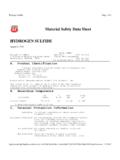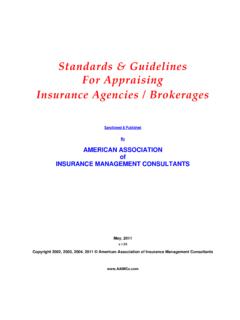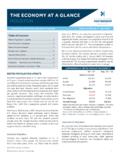Transcription of Developing & Maintaining A Sound Compensation …
1 1 Developing & Maintaining A Sound Base Pay Program By Ronald C. phillips and Jeffrey M. Robinson Synopsis Introduction Base Pay Program Objectives Establish Fairness Insure Competitive Pay Directs Work Activity Controls Payroll Costs Compliance With Laws & Regulations Is Efficient Components Of A Wage Structure Job Families & Pay Grades Minimum Wage Midpoint Maximum Wage How To Develop A Wage Structure Step 1 Identification Of Jobs and Job Content Step 2 Documenting The Principal
2 Features Of The Job Step 3 Building A Job Hierarchy Step 4 Establishing Job Worth Step 5 Assigning Pay & Pay Ranges Establishing Midpoint Determining Maximums And Minimums Calculating Spreads Spread Overlaps Smoothing Pay Grades Shaping A Misshapen Structure When, How And For What Is Compensation Given Timing And Frequency Of Pay Adjustments Pay Periods Basis For Starting Pay And Granting Increases Starting Pay Cost Of Living Increases Blanket Increases Longevity Increases Merit Increases Promotions
3 2 Demotions Maintaining The New Wage Structure Maintenance Tips Holding The Base Pay Program Accountable Variable Pay Tables Table 1 Sample Pay Structure Table 2 Market Value Ranking Table 3 Job Content Ranking Table 4 Pay Grade Overlaps Table 5 Smoothing Pay Grade Midpoints Table 6 Sample Merit Increase Guidelines Appendix Sample Job Description Sample Job Content Questionnaire Sample Supervisor s Verification Questionnaire Sample Wage Survey Data Sample Performance Appraisal Form Federal Laws and Regulations About The Authors Jeffrey M.
4 Robinson is President of PAS, Inc. (Saline, Michigan), a survey research company and consulting firm specializing in construction Compensation information. Mr. Robinson is a noted speaker, writer and consultant on wage and benefit trends and a member of the CFMA, AGC, ABC, and the American Compensation Association Ronald C. phillips is Executive Vice President of PAS, Inc. Mr. phillips consults and writes extensively on contractor organization, Compensation , and employee development. He is co-founder and Director Emeritus of the Construction Innovation Forum (The Nova Awards) and is the Editor in Chief of Contractor Compensation Quarterly.
5 3 Developing & Maintaining a Sound Base Pay Program Introduction A construction company s Compensation program should be designed to achieve three overall objectives. The program should assist in the attraction and hiring of the most qualified professionals available in the disciplines of engineering, construction technology, construction management, and business administration.
6 Second, the Compensation program should direct employee efforts toward achieving the company s strategic objectives, such as business development, profitability, safety and work quality. Third the Compensation program should insure the development and retention of a qualified workforce. A Compensation program that is capable of achieving these overall objectives is typically composed of three distinct parts. One part is employee benefits, such as health insurance, life insurance, and retirement. These, of course, are part of an employee s Compensation package and must be balanced with direct pay.
7 The other two parts of the Compensation program involve cash distributions. They are base pay and variable pay. Base pay is the pay that appears in the employee s paycheck each pay period and to which all riders, such as FICA, Medicare, Workman s Compensation , etc. are attached. Variable pay, on the other hand, is cash Compensation that varies in both its amount and timing. The most common type of variable pay is an annual cash bonus distribution. It is called variable pay because unlike base pay which is constant from pay period to pay period variable pay changes. Frequently the variation in amounts paid is associated with the achievement of company goals, divisional goals, or project goals, such as sales and profit targets.
8 Base pay, of course, is the core program to which benefits and variable pay must be coordinated. Base pay or salary is usually a key factor in attracting and Maintaining a skilled work force. As such, a base pay program must be carefully constructed and maintained so that employees perceive their paychecks as equitable relative to other employees within the firm and relative to the paychecks of employees in similar jobs across the industry. If employees view their base pay as inconsistent relative to effort and responsibility or they believe it to be less than market value, they quickly become disenchanted with their work situations and seek employment elsewhere.
9 Hence, it is important that contractors develop and maintain a sensible, consistent and competitive base pay structure. This chapter is not a textbook on the ins and outs of Compensation . Rather its purpose is to assist contractors in Developing and Maintaining a useful base pay program. To accomplish this purpose, the chapter explains in practical terms: what a base pay program is intended to do; the basic elements of the program; steps to take in Developing the base pay structure; and finally ways to keep the program up-to-date. There is also a brief section on the use of variable pay as a supplement to the base pay program along with practical examples and tools for building and administering the base pay program.
10 4 Base Pay Program Objectives A well constructed and managed base pay program achieves the following objectives that are an important part in attracting and retaining qualified construction professionals. The program establishes fairness in pay among job positions The program insures competitive pay rates The program helps direct work activity toward company objectives The program helps to control payroll cost The program complies with laws & regulations The program is effective and efficient Each of these objectives must be understood from the perspective of employees and company management because the base pay program must satisfy the needs of both.







